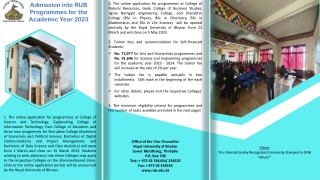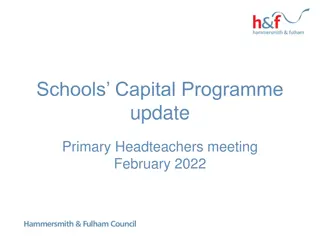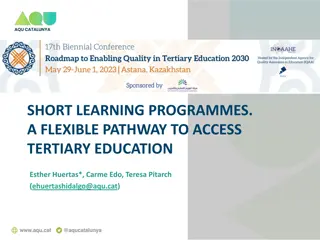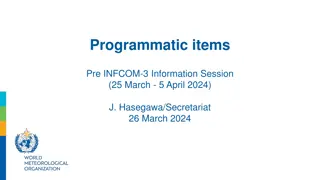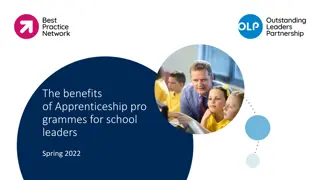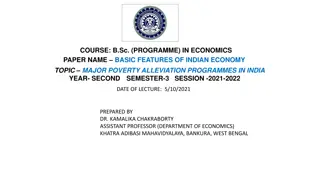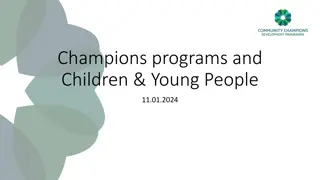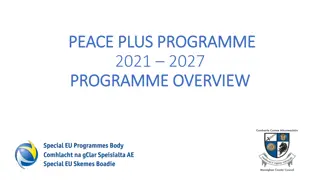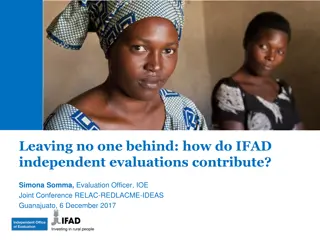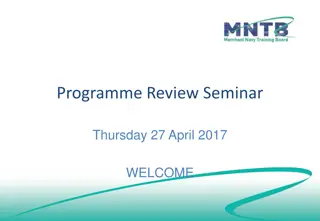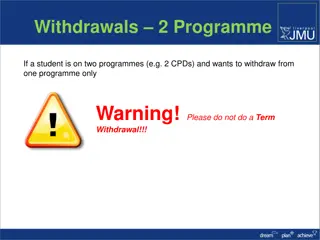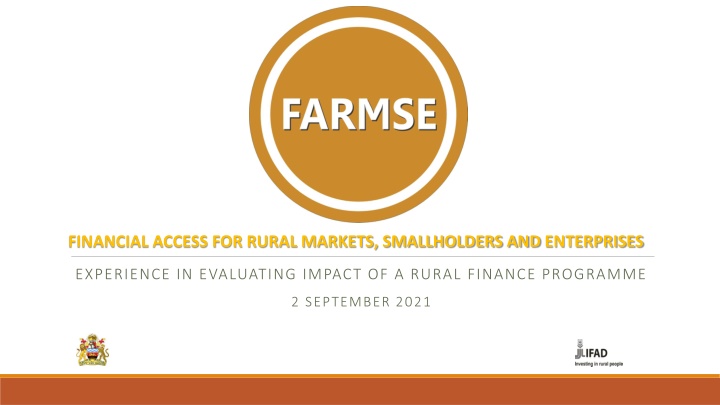
Enhancing Rural Financial Access and Impact Evaluation Experience
Explore the experience of evaluating the impact of a rural finance program focusing on improving livelihoods, reducing poverty, and increasing access to financial services for rural markets, smallholders, and enterprises. Learn about key outcome indicators, challenges faced, and the overall goal of the program.
Download Presentation

Please find below an Image/Link to download the presentation.
The content on the website is provided AS IS for your information and personal use only. It may not be sold, licensed, or shared on other websites without obtaining consent from the author. If you encounter any issues during the download, it is possible that the publisher has removed the file from their server.
You are allowed to download the files provided on this website for personal or commercial use, subject to the condition that they are used lawfully. All files are the property of their respective owners.
The content on the website is provided AS IS for your information and personal use only. It may not be sold, licensed, or shared on other websites without obtaining consent from the author.
E N D
Presentation Transcript
FINANCIAL ACCESS FOR RURAL MARKETS, SMALLHOLDERS AND ENTERPRISES EXPERIENCE IN EVALUATING IMPACT OF A RURAL FINANCE PROGRAMME 2 SEPTEMBER 2021
Outline Outline 1) Background and context 2) Key outcome and impact indicators tracked by FARMSE 3) The FARMSE experience in evaluating impact of rural finance 4) Challenges and implications in evaluating impact of rural finance initiatives
Background and context Background and context Reduce poverty, improve livelihoods and enhance resilience of rural households on a sustainable basis. Overall Goal Increase access to, and use of, a range of sustainable financial services by rural households, micro, small and medium enterprises. Development Goal Ultra poor graduation and scaling up Strengthen existing CBFOs and form new ones Support FSPs Innovation and outreach Strategic partnerships, knowledge generation and policy The capacity of ultra- poor households to graduate from poverty, improve food security and secure livelihood opportunities. Improved access to structured and sustainable community based financial organizations services. Enhanced capacity of financial service providers to deliver demand-driven services in rural areas. Increase the capacity and knowledge base of rural financial sector support organizations
Key outcome and impact indicators tracked by FARMSE Key outcome and impact indicators tracked by FARMSE Key result area Reduced prevalence of chronic malnutrition among under five children. Improved households assets ownership index. # Indicator Source of data Mid-term evaluation and end of programme impact assessment To reduce poverty, improve livelihoods and enhance the resilience. 1 Improved outreach of sustainable rural financial services to rural poor Increased access to and use of a range of sustainable financial services. Implementing partner s & progress reports 2 % of targeted households that attain food security % of women reporting improved quality of their diets Number of persons in rural areas accessing formal financial services Number of persons in rural areas accessing CFBO financial services Number of incremental rural clients accessing formal financial services or products by partner FSPs Improve capacity of ultra-poor households to graduate from poverty, improve food security and secure livelihood opportunities Mid-term evaluation and end of programme impact assessment 3 Improved access to structured and sustainable CBFO financial services. Implementing partner s & progress reports 4 Enhanced capacity of FSPs to deliver demand-driven services in rural areas Implementing partner s & progress reports 5
Key Key FSP indicators FSP indicators tracked by tracked by FARMSE FARMSE Enhanced capacity of FSPs to deliver demand-driven services in rural areas # FSP portfolio-at-risk 30 days below 5% 1 FSP operational self-sufficiency above 100% 2 Number of incremental rural clients with access 3 Number of VSLAs and members linked to FSPs 4 Number of accounts opened and their value 5 Overall number of active accounts 6 Overall number of loans and value given out 7
The FARMSE experience The FARMSE experience in outcome and impact tracking. tracking. in outcome and impact 1) It is difficult to track the impact of traditional financial inclusion in general. But it comparatively easier to measure impact of initiatives that combine livelihood improvement and RF. 2) The program's design and type FSP partner determines the type of indicators used to track outcomes and impact. 3) While private sector FSPs usually provide cost-effective and financially sustainable services, tracking their impact is more difficult than for socially oriented providers. 4) Tracking innovative interventions in rural finance requires rethinking as they do not align with traditional indicators. 5) In addition to traditional outcome indicators, partner FSPs should include specific impact indicators in their milestones, which should be tracked throughout implementation.
Challenges and implications in impact tracking of rural Challenges and implications in impact tracking of rural finance initiatives finance initiatives CHALLENGE # IMPLICATION Rural finance initiatives should be designed with the type of FSPs that will be involved in mind, and appropriate outcome and impact indicators should be developed for each category. Increased types of Rural FSPs necessitate the development of different outcome indicators. 1 It is necessary to distinguish between the short-term and long-term effects of financial inclusion initiatives. Impact studies should be incorporated at the design stage. The difficulty of attributing financial inclusion to livelihood enhancement. 2 Poor data quality, timeliness and integrity can limit the effectiveness of outcome and impact tracking activities. In some markets, certain types of rural FSPs must be supported to provide quality data. 3 Some partner institutions lack the required capacity/skills necessary to conduct outcome and impact monitoring activities. When engaging and contracting with new partner FSPs, their capacity for M&E should be taken into consideration. 4 The predicament of matching funding requirements for effective M&E in proportion to overall project costs. What are donors and stakeholders willing to pay in order to assess the impact of rural finance initiatives? 5


